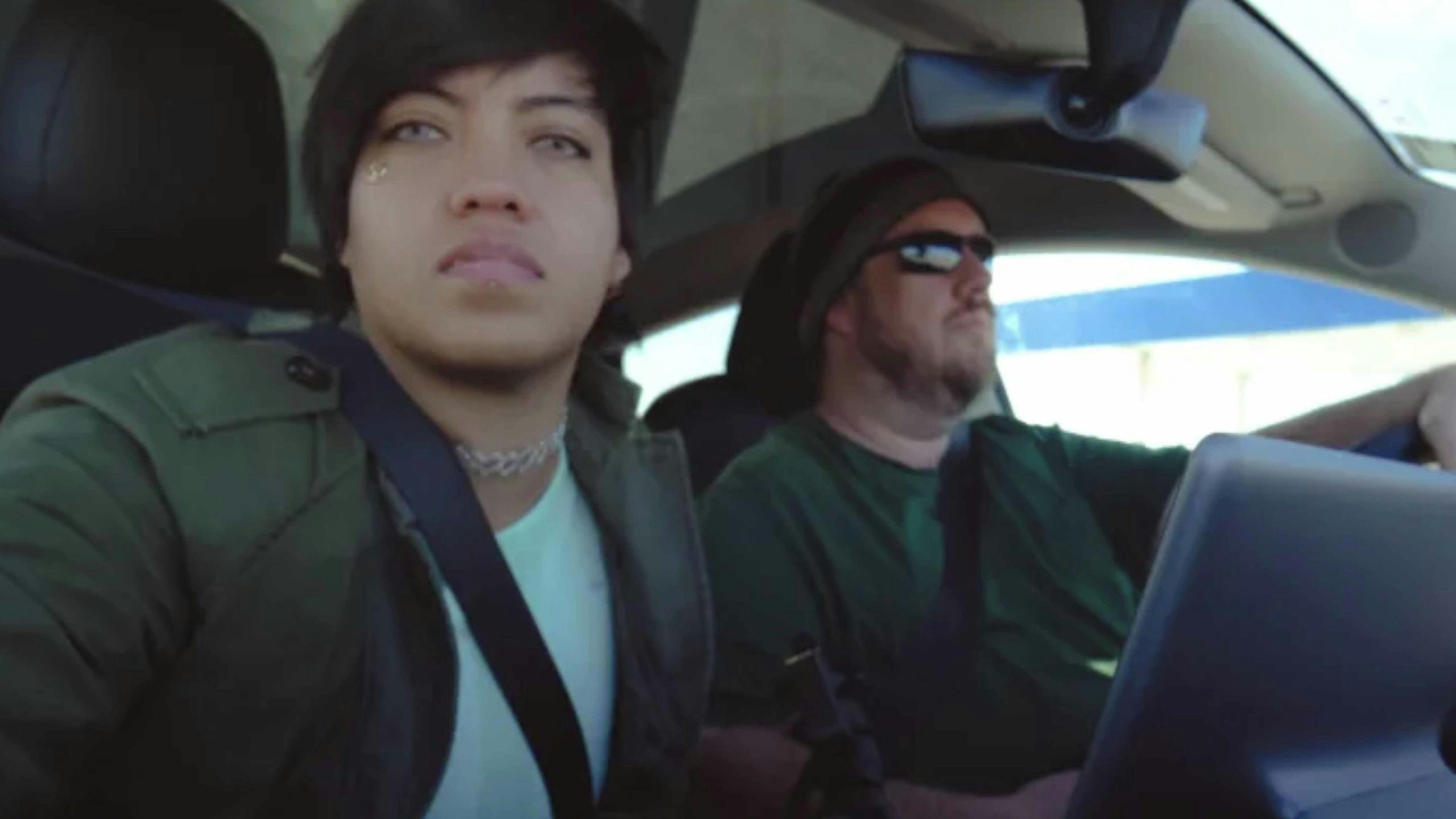Xaviar Steavenson and his sister Alice Steavenson wanted to experience the joy of driving a Tesla cross country.
They rented a Tesla from a Hertz outlet in Orlando, Florida, and headed out on the road to their destination – Wichita, Kansas.
While the Tesla performed well in Florida, Xaviar Steavenson told Cowboy State Daily that things took a turn for the worse when they encountered cold weather. They had to stop six times in one day to charge the vehicle.
“The last day of our three-day trip, it took about 17 hours to go 452 miles,” Steavenson said.
Road Worry
In EV jargon, it’s called “range anxiety” when a driver worries about running out of charge and having to get towed.
The Steavensons’ road trip became an extended exercise in range anxiety. Their trip was at the end of December when storms and record cold were frosting over much of the Southeast.
Coming out of Florida, Steavenson said, the Tesla would give the road trippers 300 miles before they had to charge. But when they encountered the cold weather farther north, their range was reduced to about 100 miles, according to the estimation the car provides.
“It would get down to 5% to 20% charge as we drove between towns,” Steavenson said.
Typically, EV owners only charge their vehicles up to 80%, especially on long trips. Charging to full decreases the life of the battery, and at a Tesla Supercharger station the cars can charge up to 80% in 20 minutes. To top it off with the last 20% takes much longer.
With their range estimations dropping rapidly in the cold, Xaviar and his sister started charging the car all the way to 100%. The Tesla’s computer was telling them that’s how much charge they needed to make it to the next Supercharger.
He said the estimation was often wrong, and they ended up sometimes getting to the next station with 20% left.
Each time they stopped, the pair dropped $25 to $30 to charge.
Not Normal
Riverton resident Patrick Lawson, owner of Wild West EV, has owned a lot of EVs and driven them plenty in Wyoming’s cold weather. He said it’s not normal to lose that much range from cold weather.
Lawson said it is normal to lose 20% to 30% when the weather it’s cold, but losing more than 50% suggests there’s something else going on.
Tesla batteries cannot take a charge when they’re cold.
But if the battery has enough charge, it can heat itself. If the battery is properly preconditioned prior to charging, it should charge right up.
Steavenson said the Steavensons were preconditioning the battery as they drove, so the battery was warm enough to charge up when they reached the station.
It just wouldn’t give them much range, even at 100% charge.
Hertz Responds
Hertz told Cowboy State Daily that the company makes sure its customers are properly informed of all the things an EV driver needs to know.
“To help customers feel confident when renting an EV, we provide a variety of information prior to pick-up, including resources and how-to’s on our EV content hub on Hertz.com that can be accessed anytime,” said Lauren Luster, a company spokesperson.
There’s also have a quick-start guide available that customers can access with a QR code on the key card that has information about operating the vehicle, including range and charging.
“Additionally, employees are trained to assist customers with questions, and we have a dedicated EV customer support team should they need further assistance via our Hertz app,” Luster said.
The company continues to take feedback from customers to improve their experience and the company’s policies, she said.
Bad Battery
Lawson said a number of factors could have lowered the Steavensons’ range.
One is that the estimating software on the vehicles tend to be very conservative, and Xaviar said it was sometimes wrong.
Another possibility is that the Steavensons had a malfunctioning car.
“That happens sometimes. The battery is bad. You can take them in and fix them or get them replaced,” Lawson said.
Considering the car was a rental and not driven by the owner, it likely wasn’t always treated as an experienced Tesla owner would give to his or her own car. That would degrade the performance of the battery as well.
Media Circus
Dr. Jason Bloomberg, an overnight inpatient hospitalist at the Cheyenne Veterans Affairs Medical Center, drove his Tesla to work the night of Dec. 21 when an Arctic blast sent temperatures plummeting more than 40 degrees in a very short time.
He charged it up to 90% before he left for work and was down to 72% when he arrived. He lost 10% more range overnight during his shift. He lost another 10% more charge warming up the battery, but he had enough power to get home in the extreme cold.
Bloomberg also speculated that the Steavensons’ rental car was likely malfunctioning.
Whatever the case, he said that it’s not normal for a Tesla to lose that much range from cold weather. He gets irritated with the way such bad experiences are reported.
“If an EV malfunctions, then it becomes, in the media circus, emblematic of all EVs,” Bloomberg said.
Xaviar Steavenson called Hertz to complain about the Tesla’s performance. The nearest Hertz branch didn’t have another Tesla for them to use, so he drove back to Florida in a Nissan Rogue Sport.





